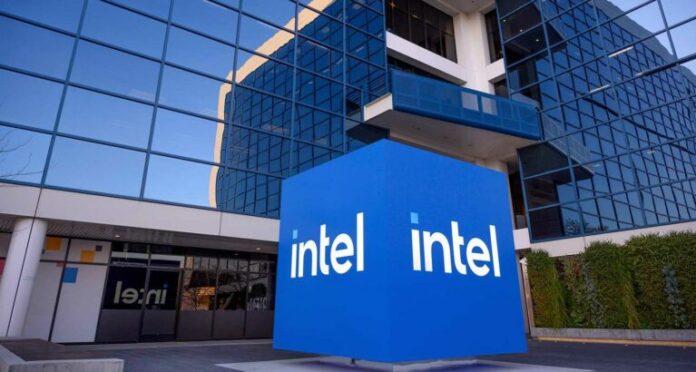
Intel CEO Pat Gelsinger has landed Amazon Web Services as a customer for the company’s manufacturing business, potentially bringing work to new plants under construction in the US and boosting his efforts to turn around the embattled chip maker.
Intel and AWS will co-invest in a custom semiconductor for artificial intelligence computing—what’s known as a fabric chip—in a “multiyear, multibillion-dollar framework,” according to a statement. The work will rely on Intel’s 18A process, an advanced chip-making technology.
The shares jumped almost 10% in late trading after the announcement. They had been down 58% this year, closing at US$20.91 on Monday. “Today’s announcement is big,” Gelsinger said in an interview. “This is a very discerning customer who has very sophisticated design capabilities.”
The news was part of a flurry of announcements that followed a pivotal board meeting last week. Intel is also postponing new factories in Germany and Poland but remains committed to its US expansion in Arizona, New Mexico, Oregon, and Ohio.
Gelsinger, who embarked on a bold comeback effort for Intel in 2021, has had to scale back some of his ambitions in the name of efficiency. With sales shrinking and losses piling up, the company announced plans last month to slash 15 000 workers, find $10 billion in cost savings, and suspend Intel’s dividend. Now he’s going further to rein in expansion plans, especially overseas.
The Poland and Germany construction projects will be paused for about two years, depending on market demand. Another one in Malaysia will be completed but only put into operation when conditions support it, Intel said.
At last week’s three-day board meeting, executives presented options on how to conserve cash while keeping Gelsinger’s turnaround plan on track. The CEO’s effort hinges on transforming Intel into a so-called foundry, a chip maker that manufactures products for outside customers. The Santa Clara, California-based company has been slow to line up customers for the project, and a high-profile client such as Amazon represents a notable win.
Intel is also looking to speed up efforts to execute the $10 billion in cost savings and focus its products better on AI computing, an area where rival Nvidia has excelled.
AWS is the largest provider of cloud computing, and it could help build confidence that Intel can compete with the likes of foundry leader TSMC. AWS has used Intel processors over the years but has been shifting more towards in-house designs—tthe very products that Intel may now help manufacture.
Microsoft, another major cloud computing provider, announced plans in February to use Intel for some of its in-house chips as well.
Another change: Intel’s foundry operations, referred to as IFS, will be further separated from the rest of the company and become a wholly owned subsidiary. That move is aimed in part at convincing prospective customers—ssome of whom compete with Intel—tthat they are dealing with an independent supplier.
“We still have things to learn about becoming a foundry,” Gelsinger said in the interview. “I need lots of customers.”
In another win, Intel said earlier on Monday that it’s eligible to receive as much as $3 billion in US government funding to manufacture chips for the military. The effort, called the Secure Enclave, aims to establish a steady supply of cutting-edge chips for defence and intelligence purposes.
Intel still has a long way to go to win back Wall Street’s confidence. After years of losing ground to rivals and seeing its technological edge slip, the Silicon Valley pioneer is valued at less than $90-billion. It no longer ranks as one of the top 10 chip makers on that basis. Nvidia, meanwhile, now has a market capitalisation of about $2.9 trillion.
Intel shocked investors with a bleak financial report last month, triggering the biggest single-day stock decline in decades. Analysts described the announcement as Intel’s worst-ever earnings report.










